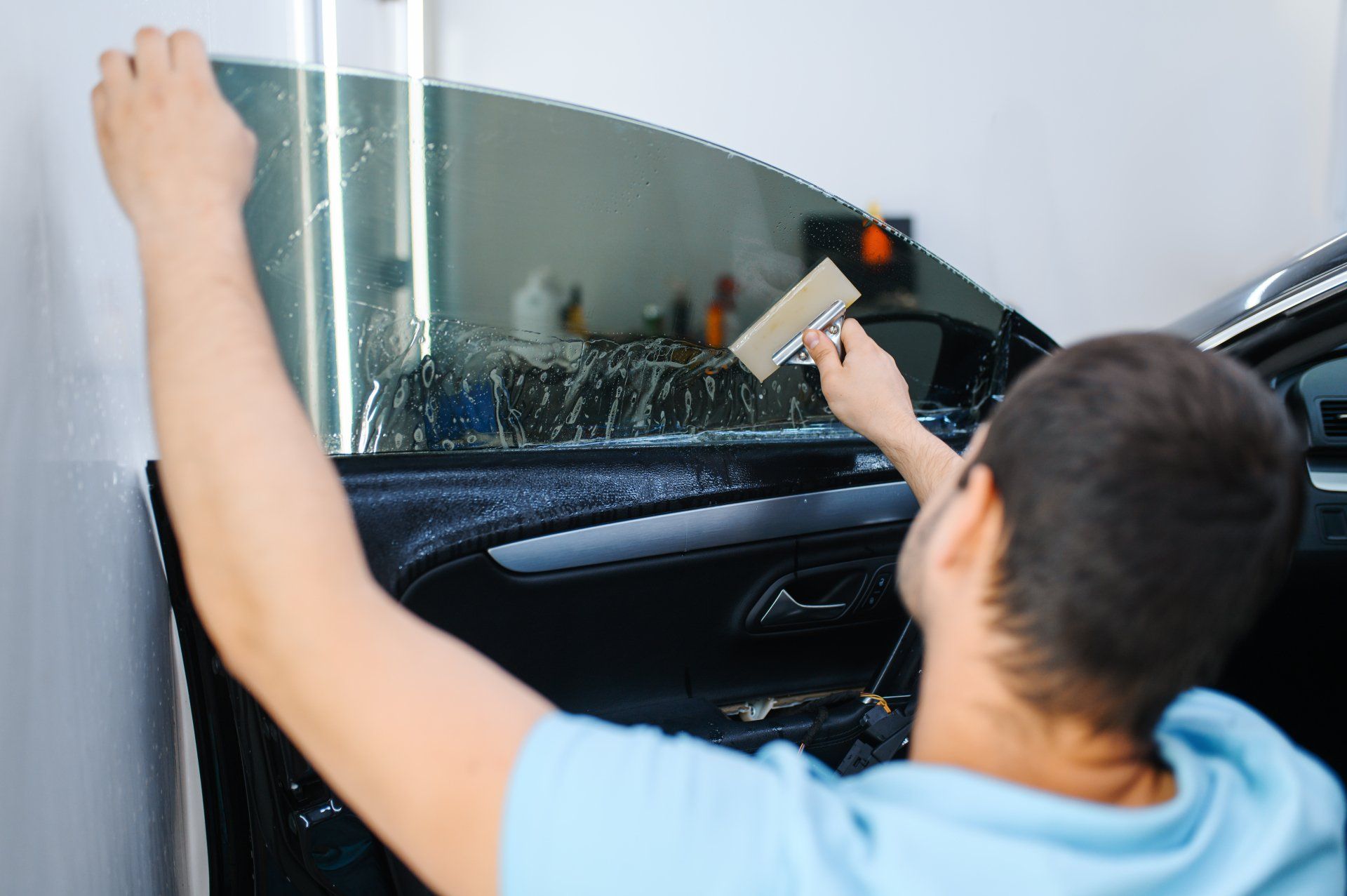The Long-Term Perks of Window Tinting for Your Automobile's Worth and Comfort
The Long-Term Perks of Window Tinting for Your Automobile's Worth and Comfort
Blog Article
The Process of Specialist Home Window Tinting Explained
From choosing the right film type to the careful prep work of home windows, each action plays an important function in accomplishing a remarkable application. Complying with these preliminary preparations, the careful cutting and application of the movie need accuracy to avoid blemishes.
Picking the Right Window Movie
The first consideration is the kind of movie, which can vary from dyed, metalized, to ceramic films (window tinting). Colored films mainly give personal privacy and visual improvement, while metalized films mirror heat and UV rays, improving power effectiveness.
Next, consider the movie's Visible Light Transmission (VLT) portion, which figures out just how much light gets in the space. A lower VLT offers better privacy and heat denial but might lower natural light considerably. Additionally, the movie's solar warmth gain coefficient (SHGC) is crucial; a lower SHGC shows much better thermal performance, aiding to preserve indoor convenience.

Preparing the Windows
As soon as the proper home window movie has been chosen, the next step is extensively preparing the home windows for setup. This prep work is essential for achieving ideal attachment and ensuring a perfect look post-installation.
The first task entails cleansing the windows diligently (window tinting). A high-quality glass cleanser is important, preferably one that is ammonia-free to stay clear of harmful any type of window seals or tint products. Using a lint-free cloth or paper towels, professionals must remove any dust, dust, or grease, paying special focus to the sides and corners where particles typically gathers

Cutting the Film
An exact approach to reducing the movie is essential for guaranteeing an excellent fit on the prepared home windows. This step needs both ability and attention to information, as inaccuracies can bring about unsightly spaces or overlaps that concession the aesthetic and useful qualities of the tint.
Prior to reducing, the professional should measure the home window dimensions properly, representing any kind of special shapes or shapes. It is advisable to use premium home window film, as this material tends to be more forgiving during the reducing procedure. The movie is usually laid flat on a tidy, smooth surface area, and a sharp utility knife is used to ensure tidy edges.
To achieve optimal results, many professionals make use of themes created from previous installations or make use of software to design accurate patterns. A common technique entails including an extra margin to the layout, enabling changes throughout the application stage.
Furthermore, cutting the film in a controlled setting reduces the danger of pollutants influencing the glue side. By sticking to these pop over to these guys thorough practices, window tinting experts can ensure that the film not only fits seamlessly however likewise carries out successfully over time, improving both look and performance.
Applying the Color
After thoroughly cutting the movie to the right measurements, the following action involves using the tint to the home window surface area. This process starts with making certain that the home window is tidy and free from any type of dust, debris, or residues that might affect adhesion. A specific cleaning remedy is often made use of, adhered to by extensive drying with a lint-free cloth.
Once the surface is prepared, the installer will very carefully position the tint movie versus the glass. It is vital to line up the movie properly to avoid misplacement, as any errors can lead to an unprofessional appearance. To promote this, the installer might utilize a light haze of application service on the glue side of the movie, enabling mild repositioning if needed.
Making use of a squeegee, the installer will after that start to press the film onto the glass, functioning from the facility outwards to eliminate air bubbles and make certain a company bond. This strategy is critical, as it assures a smooth and perfect coating. Throughout the application, attention to information is crucial to stop creases or imperfections, making certain that the tint not only boosts visual appeals but additionally offers the desired capability.
Final Evaluation and Treatment
The last examination is a crucial step in the home window tinting procedure, ensuring that the installation fulfills both visual and useful requirements. During this phase, experts carefully check out the installed tint for any type of blemishes, such as bubbles, creases, or misalignments. A complete examination likewise includes checking the adherence of the movie to the glass, as well as its uniformity and overall appearance.
After the examination, proper care and maintenance directions are given to the client. It is vital to notify them about the recommended timeline for cleansing the tinted home windows, typically suggesting a delay of at least one month after installation to permit the glue to cure totally. Clients click this link should be informed on ideal cleaning products and methods, emphasizing the avoidance of ammonia-based cleansers that can harm the tint.
Additionally, professionals need to recommend customers on the importance of routine upkeep to extend the life of the color. This consists of regular checks for signs of wear or damages and reacting without delay to any type of issues. By making sure a comprehensive final assessment and supplying clear care standards, window tinting specialists improve customer satisfaction and the long life of their work.
Conclusion
The expert window tinting process includes a number of important steps that guarantee top quality results. Selecting the appropriate film type, preparing the windows meticulously, accurately cutting click over here now the movie, and applying it with precision are necessary for achieving a perfect surface. An extensive final examination warranties that all requirements are fulfilled, while correct post-installation care is important for preserving the color's long life and performance. Adhering to these treatments eventually enhances both the aesthetic charm and functionality of the tinted home windows.
Report this page